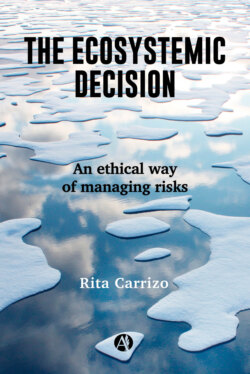Читать книгу The Ecosystemic Decision - Rita Carrizo - Страница 14
На сайте Литреса книга снята с продажи.
What are the pillars of systems thinking?
ОглавлениеIn the hope of having clarified the basics of systems thinking, it now becomes easier to delve deeper into the cornerstones that support this perspective, which most human beings seem to lack. The first one is the feedback process already mentioned, which can be of one of two types: positive/reinforcing/amplifying or negative/balancing. Reinforcing or amplifying feedback leads to divergent behaviour by indefinitely expanding or terminating the activity. In this process, the outcome of an action helps to facilitate a transformation in the same direction as the preceding outcomes, accumulating them in the form of a snowball effect. In such a case, the growth or decline is exponential. Senge states that this kind of process is the engine of growth or decay. When they are occurring in a given system, small changes undergone are amplified, as well as the impact they have on the system. For example, it is possible to observe a reinforcing effect when a country’s economy grows steadily over a period of time and people’s confidence acts to reinforce it. Another similar effect is observed when there is a run on the stocks, in which case the distrust in the system is so severe that even the most irrelevant news has the potential to accelerate the decadence.
In negative, balancing, stabilising or regulatory feedback -all synonyms- the results of an action go in the opposite direction to the previous results, and their effects “stabilise” the system, favouring its equilibrium. This type of behaviour is adaptive, i.e., it seems to pursue a purpose; any variation implies a correction in order to regulate itself and maintain equilibrium. For example, filling a glass with water, going at a certain speed in a car, maintaining weight or body temperature.
The second pillar of ST is another very observable process in nature that has been called “delay” of the system. Delays are presented by the ST as interruptions in the reciprocal flow of influence between the system and its environment (other systems), that is to say, in the flow of feedback. They cause the effects of the consequences of the actions taken to be felt gradually or even at a different and distant time from that of the original decision. If decision-makers do not fully understand this concept, there is a risk that they will believe that the decision made has had no impact and thus, believe that “nothing happened.” As discussed in previous pages, the scientific revolution and its offspring, the industrial revolution, brought countless advances in technology and in the way we do business. Much of this development was used to generate a supposed well-being for humans and to create wealth through the exploitation of natural resources on a scale unknown to the ecosystem of planet Earth at that time. The impacts of this exploitation did not produce their consequences in an immediate and perceptible way, changing the climate or causing the current ecological imbalance. In fact, they were occurring unnoticed, but their effects were not felt until many years later; for a long time, people thought that nothing was happening.
